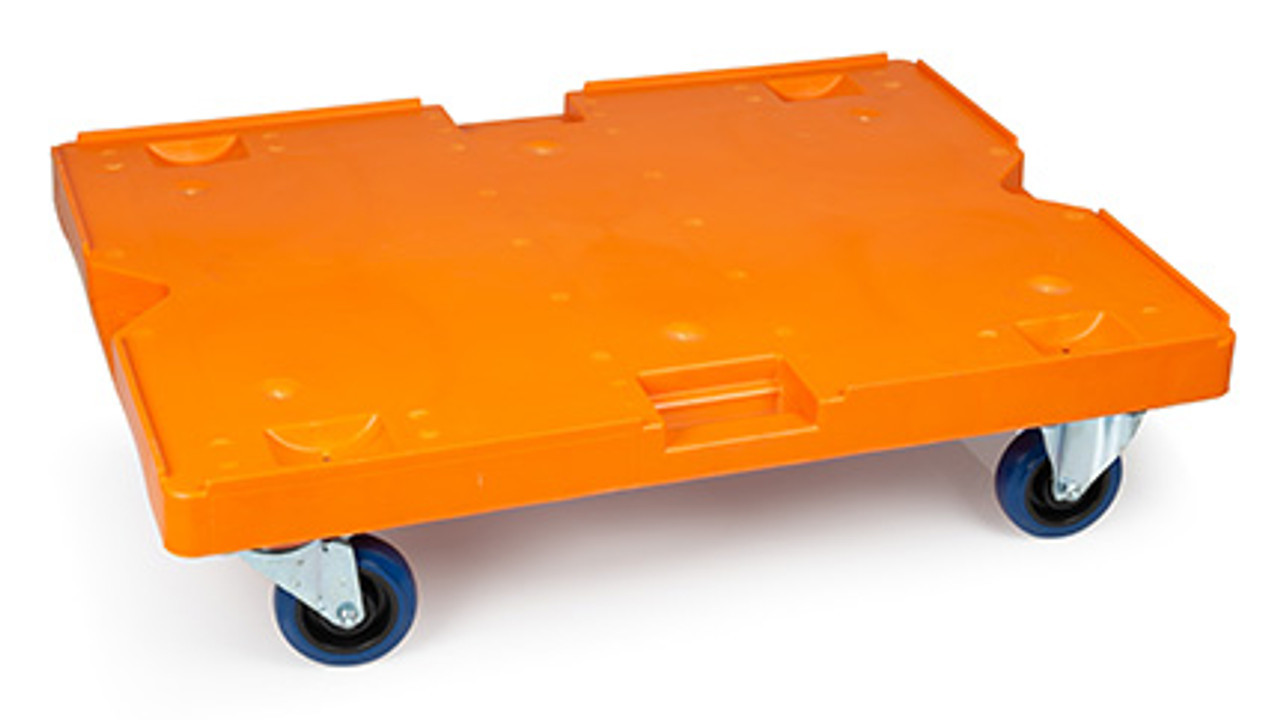What is a Dolly and Why It Matters
A dolly is a low-profile trolley designed to move heavy loads with ease. Unlike platform trolleys with raised decks and handles, a dolly keeps the load close to the ground, reducing lifting strain and making it easier to manoeuvre through tight spaces. With load capacities of up to 400 kg, dollies are trusted across warehouses, factories, retail backrooms, and even by movers for appliances or bulky items.
Key Points
- Understand what a dolly is and where it fits into material handling solutions
- Explore the differences between aluminium dollies and plywood dollies
- Learn how deck size, load capacity, and wheel configuration affect performance
- Compare dollies vs platform trolleys to choose the right tool for your environment
- Get expert answers to common dolly FAQs
Types of Dollies Available
Aluminium Dolly
An aluminium dolly combines strength with light weight. With options ranging from compact 350 × 350 mm decks to larger 1200 × 1000 mm versions, aluminium dollies can handle up to 400 kg while resisting corrosion. They’re ideal for warehouses and industries where durability and hygiene are essential.
Plywood Dolly
A plywood dolly features an 800 × 600 mm deck with a non-slip surface, giving extra grip for boxes or equipment that might otherwise slide. With the same 400 kg capacity, plywood dollies are especially useful in workshops, appliance moving, or any situation where stability and friction are priorities.
Key Considerations When Buying a Dolly
Load Capacity and Size
Always match the dolly’s capacity and deck size to your loads. A 400 kg dolly will easily handle heavy cartons or machinery parts, but choosing the right footprint from 350 × 350 mm up to 1200 × 1000 mm ensures stability and safety.
Wheel Configuration and Handling
Most dollies are equipped with 2 swivel castors and 2 fixed castors. This balance offers easy steering while maintaining straight-line control. For environments requiring maximum manoeuvrability, larger swivel wheels or non-marking castors may be worth considering.
Aluminium vs Plywood
The choice between an aluminium dolly and a plywood dolly depends on your environment. Aluminium is lightweight, corrosion-resistant, and easy to clean, while plywood offers grip and stability thanks to its textured non-slip surface. Both can handle the same weight, but their strengths lie in different applications.
Dolly vs Platform Trolley: Which One Do You Need?
Dolly for Tight Aisles
A dolly shines in compact areas where a handle or higher deck would be cumbersome. Its low height makes loading easier, and it can be stored neatly when not in use.
Platform Trolley for Bigger Loads
A platform trolley provides a larger surface area and a handle for pushing or pulling, which is useful for bulkier loads and longer distances. Sizes like 900 × 600 mm or 1200 × 600 mm are standard for warehouse use.
Choosing Between the Two
If your priority is compact handling and minimal lift height, a dolly is ideal. If you need more control, a handle, and space for larger loads, a platform trolley is the better choice.
Conclusion
A dolly is a powerful yet simple solution for moving heavy loads quickly and safely. With options like the aluminium dolly for lightweight strength and corrosion resistance, or the plywood dolly for added grip and stability, businesses can choose a model tailored to their needs. By considering load capacity, deck size, and wheel configuration, you can ensure your operations benefit from reliable, efficient material handling. Whether you’re comparing a dolly to a platform trolley or choosing between materials, investing in the right equipment will improve workflow, safety, and productivity.
Dolly FAQs
- What is the maximum load a dolly can carry?
Both aluminium and plywood dollies can carry up to 400 kg, making them suitable for heavy-duty use in warehouses and workshops. - What is the difference between an aluminium dolly and a plywood dolly?
An aluminium dolly is lightweight, corrosion-resistant, and easy to clean, while a plywood dolly offers a non-slip surface for greater load stability. - Why do most dollies have 2 swivel and 2 fixed castors?
This setup provides a balance between manoeuvrability and straight-line control, making it easier to push or pull heavy loads without losing stability. - Can a dolly replace a platform trolley?
Not always. A dolly is better for compact spaces and lower lift heights, while a platform trolley is more suitable for larger loads, longer distances, and when a handle is needed. - What size dolly should I choose?
The right size depends on the load you’re moving. Smaller dollies like 350 × 350 mm are ideal for compact items, while larger sizes such as 1200 × 1000 mm provide a stable base for bulky loads.

